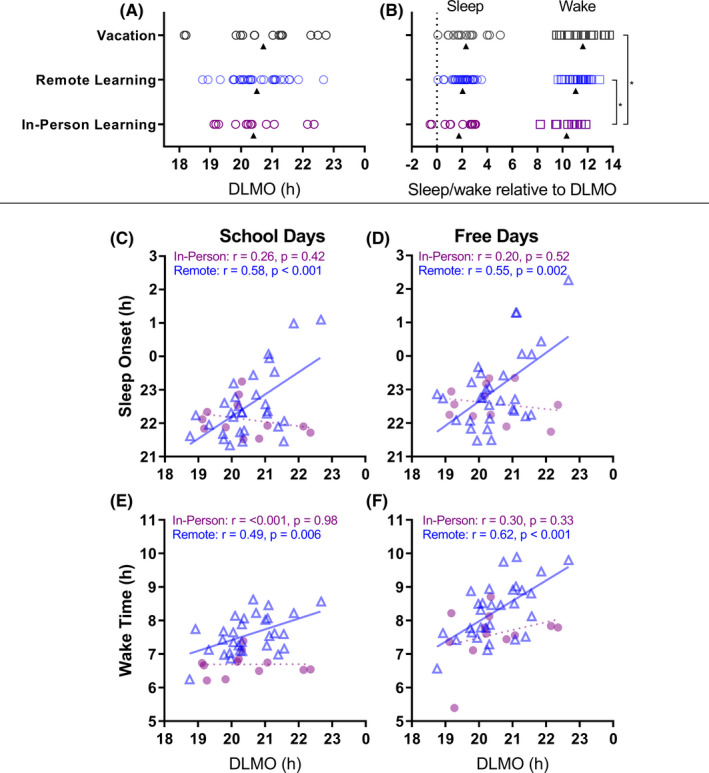FIGURE 3.

Timing of circadian phase (DLMO, h) and sleep. Top panel: Timing of DLMO (A); and timing of sleep (circles) and wake (squares) on school days relative to DLMO time (phase angle, 0 = DLMO time) (B) during in‐person learning (n = 12), remote learning (n = 30), and vacation (n = 15). Open circles represent individual participants, and triangles represent the group mean. * indicates P < .05. See also Figure S1. Lower panels: Relationships between circadian phase (DLMO, h) and sleep‐wake timing during school days (C and E) and free days (D and F). The in‐person learning group (n = 12) is represented as closed circles, and the remote learning group (n = 30) in open triangles. Straight solid lines indicate a significant linear relationship, whereas dashed lines indicate a nonsignificant linear relationship
